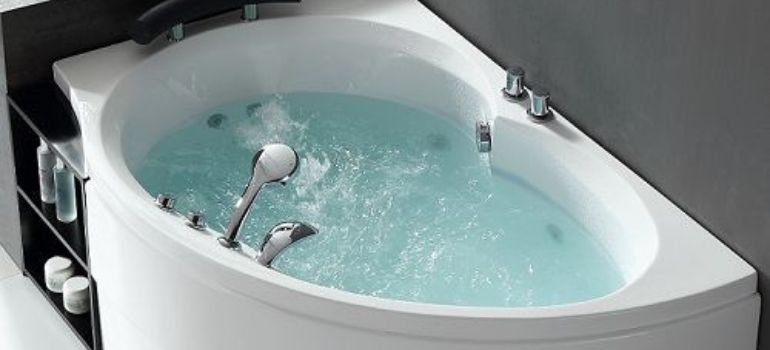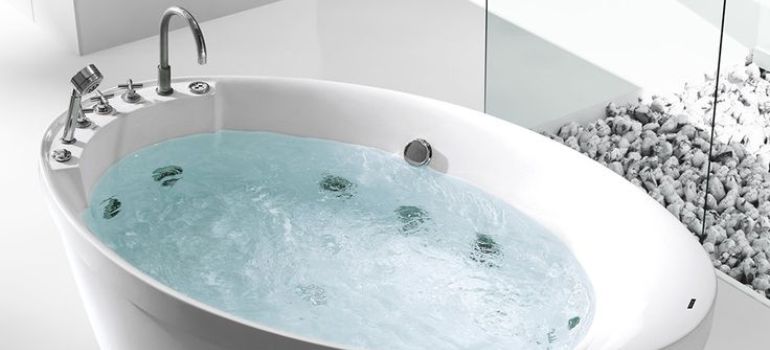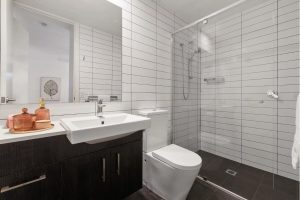Introduction
Jacuzzi bathtubs have become a symbol of luxury and relaxation, providing a spa-like experience in the comfort of your own home. However, knowing how to turn off your Jacuzzi bathtub is crucial to ensure the safety of your equipment and maintain its longevity.
Why Is It Important to Turn Off Your Jacuzzi Bathtub?
Turning off your Jacuzzi bathtub properly serves several purposes:
- It conserves energy, saving you money on utility bills.
- It prolongs the life of your bathtub and its components.
- It reduces the risk of accidents or malfunctions.
Safety Precautions
When it comes to your Jacuzzi bathtub, ensuring safety is paramount. Taking the necessary precautions will not only protect you and your loved ones but also help maintain the longevity of your Jacuzzi. Here are some crucial safety measures to keep in mind:
Supervision
Never leave your Jacuzzi bathtub unattended while it’s in use. Ensure that someone is present, especially if children or individuals with limited mobility are using the tub. Accidents can happen quickly, so supervision is key to preventing mishaps.
Electrical Safety
Jacuzzi bathtubs often have electrical components such as pumps, heaters, and control panels. To avoid electrical hazards:
- Ensure that all electrical connections are properly grounded and meet local safety standards.
- Keep electrical outlets and switches away from direct contact with water.
- If you notice any electrical issues, such as exposed wiring or sparks, immediately turn off the power and consult a qualified electrician.
Slip Prevention
The surface around your Jacuzzi can become slippery due to splashed water or spilled bath products. To prevent slips and falls:
- Place slip-resistant mats near the tub and in high-traffic areas.
- Use bath rugs or towels to dry off before stepping out of the tub.
- Keep the area around the tub dry and free from clutter.
Temperature Control
Maintain the water temperature at a comfortable level, avoiding extremely hot water. High water temperatures can cause burns or dizziness, leading to accidents. Most experts recommend keeping the water temperature below 104°F (40°C).
Cleaning and Maintenance
Regularly clean and maintain your Jacuzzi bathtub to prevent mold, mildew, and bacterial growth. Use cleaning products recommended by the manufacturer to avoid damaging the tub’s surface. Keep the jets and filters clean to ensure efficient water circulation.
Emergency Preparations
In case of an emergency or if someone becomes distressed while using the Jacuzzi, make sure you have easy access to emergency contact numbers and a first aid kit. Learn CPR and basic first aid techniques, especially if you have children or elderly individuals using the tub.
Chemicals and Additives
If you use bath salts, oils, or other additives in your Jacuzzi, use them sparingly and follow the manufacturer’s recommendations. Excessive use of such products can lead to residue buildup and affect the tub’s components.
Regular Inspections
Perform regular inspections of your Jacuzzi bathtub and its surrounding area. Look for loose tiles, cracks, or any signs of wear and tear that could pose safety hazards. Address any issues promptly to prevent accidents.
Step-by-Step Guide to Turning Off Your Jacuzzi Bathtub

Locate the Control Panel
The control panel is usually located near the tub or on an adjacent wall. It allows you to control the various functions of your Jacuzzi bathtub, including turning it on and off.
Switching Off the Power
- Begin by pressing the “Off” button on the control panel. This will stop the water circulation and the massage jets.
- Turn off the heater to prevent it from running unnecessarily. This will save energy and extend the lifespan of the heater.
Ensuring Complete Shutdown
After turning off the power, it’s important to take a few additional steps:
- Check for any remaining water in the pipes and drain it to prevent freezing in colder climates.
- Clean the bathtub and its components to maintain hygiene and prevent clogs.
Maintenance Tips
Checking the Filters
Regularly inspect and clean the filters in your Jacuzzi bathtub. Clogged or dirty filters can affect water circulation and reduce the efficiency of the jets. Clean the filters according to the manufacturer’s instructions or replace them when necessary.
Water Chemistry
Maintaining proper water chemistry is crucial for the longevity of your Jacuzzi bathtub. Use water testing kits to check the pH and chemical balance regularly. Imbalanced water can lead to scaling, corrosion, and damage to the tub’s components.
Covering Your Jacuzzi
When your Jacuzzi is not in use, cover it with a suitable cover or lid. This helps in keeping debris, leaves, and insects out of the water, reducing the need for frequent cleaning and preventing damage to the equipment.
Professional Servicing
Consider scheduling regular professional servicing for your Jacuzzi bathtub. Experts can identify and address issues that may not be apparent to the average user. Regular maintenance by professionals can extend the lifespan of your Jacuzzi.
Troubleshooting Common Issues
Water Temperature Fluctuations
If you notice frequent fluctuations in water temperature, it could be due to a malfunctioning thermostat. In such cases, contact a technician to diagnose and repair the issue.
Unresponsive Control Panel
Sometimes, the control panel may become unresponsive or display error codes. Consult your Jacuzzi bathtub’s user manual to interpret error codes, and if necessary, seek professional assistance.
Leak Detection
If you observe water pooling around your Jacuzzi or notice a decrease in water level when it’s not in use, there may be a leak in the plumbing. Address leaks promptly to prevent water damage to your home and costly repairs.
Conclusion
In conclusion, turning off your Jacuzzi bathtub is a straightforward process that, when done correctly, can save energy and ensure the longevity of your beloved relaxation oasis. However, proper maintenance and care go beyond just shutting down your tub.
By following the maintenance tips mentioned in this article and staying vigilant for any signs of trouble, you can enjoy your Jacuzzi bathtub without worries. Remember that regular maintenance and addressing issues promptly can save you time and money in the long run, allowing you to continue relishing the therapeutic benefits of your Jacuzzi.
So, take the time to pamper yourself, unwind, and rejuvenate in the comfort of your Jacuzzi, knowing that you have the knowledge to maintain it in optimal condition.
Frequently Asked Questions (FAQs)
Yes, you can use bath salts and essential oils, but be cautious not to use too much, as they can leave residue and affect the tub’s components. Use them sparingly and clean the tub thoroughly afterward.
Refer to your Jacuzzi’s user manual for specific instructions on draining and refilling. Typically, there is a drain valve near the bottom of the tub that you can use to empty it, and you can refill it using a garden hose or a designated fill port.
It’s best to use cleaning products specifically designed for Jacuzzi bathtubs to prevent damage to the tub’s surface and components. Always follow the manufacturer’s recommendations for cleaning.
Yes, never leave the bathtub unattended while it’s in use. Keep the area around the tub dry to prevent slips and falls. Ensure that all electrical components are in good condition, and do not use the tub if you notice any issues.
Installing a Jacuzzi bathtub typically requires professional plumbing and electrical work. It’s recommended to hire a licensed technician or contractor to ensure proper installation and safety compliance.



